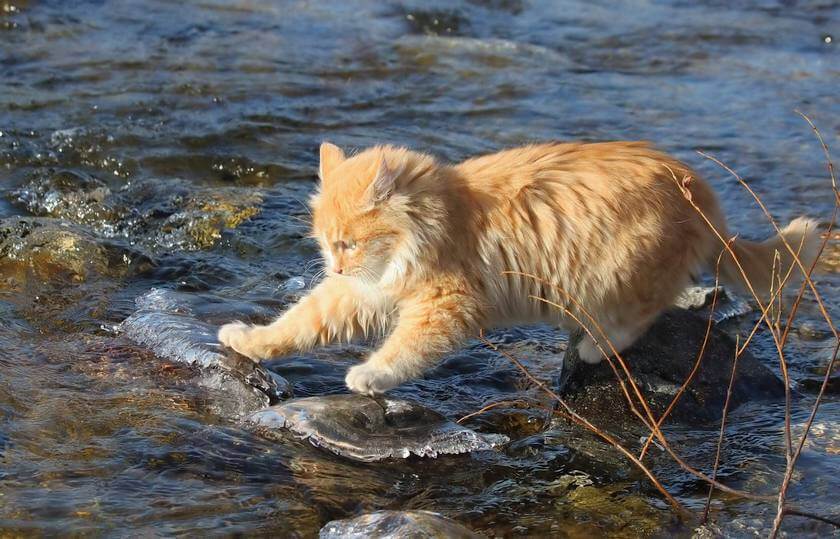“Would you like a side of poop to go with your filet o’ fish or a plop o’ poop on your pet’s fish flavored food?”
Not many people would say yes to such a question, but — brace yourself — there’s poop on most imported fish.
Some people may throw caution to the wind and bravely exclaim, “Well, hell, what are the chances it’s in my fish?”
Chances are pretty darn good that poop is on your fish considering that 84% of the fish in the United States is imported and most of it comes from Asia.
In fact, most cases of contamination involving imported food in the U.S. are related to exposure to fecal matter, regardless what type of food it is.
Poor fish
As if farmed fish didn’t have it bad enough, fish farmers in Asia put their chicken coops directly above the fish ponds, so when the chickens poop, it falls directly into the fishponds so the fish can feed on the chicken waste. In Thailand, chicken coops with as many as 20,000 birds are often suspended in rows above ponds used for farming shrimp and fish.
But wait!
It’s not just chicken poop they are forced to eat, but — brace yourself again — untreated human waste (aka poop).
Michael Doyle, a microbiologist with the University of Georgia, the keynote speaker at the general meeting of the American Society for Microbiology in New Orleans, said that food producers in China regularly use untreated human and animal waste for feeding farmed fish meant for eating and for fertilizing land to grow produce:
“Feces is the primary nutrient for growing the tilapia in China,” he said.
Yum!
Scientists refer to this practice as Integrated Multi-Trophic Aquaculture (IMTA) — I call it gross.
Back in the old days — say, around 2500 BC — when the Chinese were practicing the earliest forms of aquaculture, they fed their fish nymphs and silkworm poop.
Sadly, the quaint diet of old has been replaced by a sickening stew of antibiotics, hormones, pesticides, fertilizers, dyes and animal and human waste.
Fish fraud
Consumers are given little or no information about when, where or how seafood is caught. And there is very little certainty that the fish they are buying is even accurately labeled. The information that is provided on seafood labels is frequently misleading or fraudulent. Recent studies have found that seafood may be mislabeled as often as 25 to 70 percent of the time.
You can forget about the Food and Drug Administration watching your back, because less than 1% of imported fish is currently inspected. And with more than one-third of all seafood potentially mislabeled, you don’t have a hope in hell of knowing what you’re eating or where it came from.
Fish farming: The eco freak show
If you think fish raised on a ranch is better ecologically than wild caught fish, forget about it. Farming any carnivore creates more waste streams infested with parasites, and clogged with chemicals; water starved of oxygen with algae bloom run a muck.
Farmed fish are kept in concentrations never seen in the wild, with each fish occupying less room than the average bathtub. Packed tightly, stressed fish rub against each other and the sides of their cages, damaging their fins and tails and becoming sickened with various diseases, infections and cancer.
Catastrophic consequences
If your answer is to simply avoid buying fish farmed in poop, you face an even larger, more frightening, problem: Buying illegal, unsustainable fish; with more than three-quarters of fish stocks worldwide fully or over-exploited, it presents an unsavory ethical and moral element to fish flavored cat food: Contributing to the catastrophic consequences of overfishing.
Frankenfish
Descendants of Dr. Frankenstein created a genetically modified Franken-salmon that grows five times faster than a normal salmon. And when these monstrous fish escape into freedom, they create havoc and mayhem wherever they swim. Not only is the Franken-salmon monster a schoolyard bully, but evidence suggests that they contain higher levels of the cancer-promoting hormone IGF-1, more antibiotics and a potentially life-threatening allergen.
Considerations
Ultimately, the destructive path that fish farming leaves in its wake, the disappearance of once pristine coastal ecosystems, the impact on wild fish populations and genetically modified salmon make farmed fish a dangerous and ecologically devastating choice.
READ: Factory Fish Farming


Comments (5) Write a comment